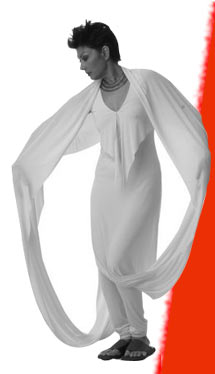It was with great anticipation that I left Ahmedabad last week. I was going to see the new international airport, the one like Changi airport in Singapore, built by the same firm. Wow, I thought, let’s see what a first rate firm and Rs.300 crores of our money has achieved.
I set myself up for disappointment. The airport resembles an aircraft hanger more than anything else. It is vast, with high ceilings, it is true, but that is it. No shops, no decorations except scalloped satin way up, the kind that band baja wallahs have, or decorate dining tables at Ahmedabad’s catered events. And little pieces of cloth, uninteresting in a land of fabulous textiles, used as miniature hangings. Oh, and of course the Christmas trees in pots. Why Christmas trees I wondered. If Singapore airport is flooded with beautiful (real) orchids, their national flower, why this here? Why not resplendent and abundant bougainvillea?
In the flight I was surrounded by an extraordinary group of women. These were 6 of the 15 women orthopaedic surgeons in the United States (are there any in India? I have never encountered one). They were returning from Khatmandu. Trekking? I asked. Oh, No. They belonged to a medical group on a mission. Antoinette Ohlson, an expert physical therapist with the group, shared their vision.
In 2006, five female orthopaedic surgeons met on a professional panel focused on the impact of arthritis on women. Their meeting was a rarity as women represent only 4% of orthopaedic surgeons in the United States. Despite the varied paths that brought them into the field, the commonalities in their experiences as surgeons created a shared purpose: To combine their skills and expertise to make a difference on a global scale, and to respond to the unique needs of women who develop more knee arthritis, experience more advanced stages of joint disease and greater disability, yet often face many barriers to receiving effective long-term treatment. They set up WOGO – Women Orthopedics Global Outreach, to go to the most under-serviced women in the world.
With their personal schedules and commitments of teaching, parenting and research, getting a mission set up was difficult. But the surgeons were determined and after two years of planning, with the help of another organization called Operation Walk, they set up a seven day operating mission in a teaching hospital in Khatmandu.
“The situation was difficult”, another one of the surgeons told me sardonically.
There was no air conditioning, the machines there were decades old and decrepit, the electricity came and went, and cleanliness levels were far from what they needed. But they were determined, and bringing in generators they set about unpacking and putting together their machines and operating material. Local doctors had screened patients and made up a list of those who would benefit the most and the six women set about their surgeries, finishing 45 in six working days.
How had the experience been, I asked. The glow in their eyes was response enough.

